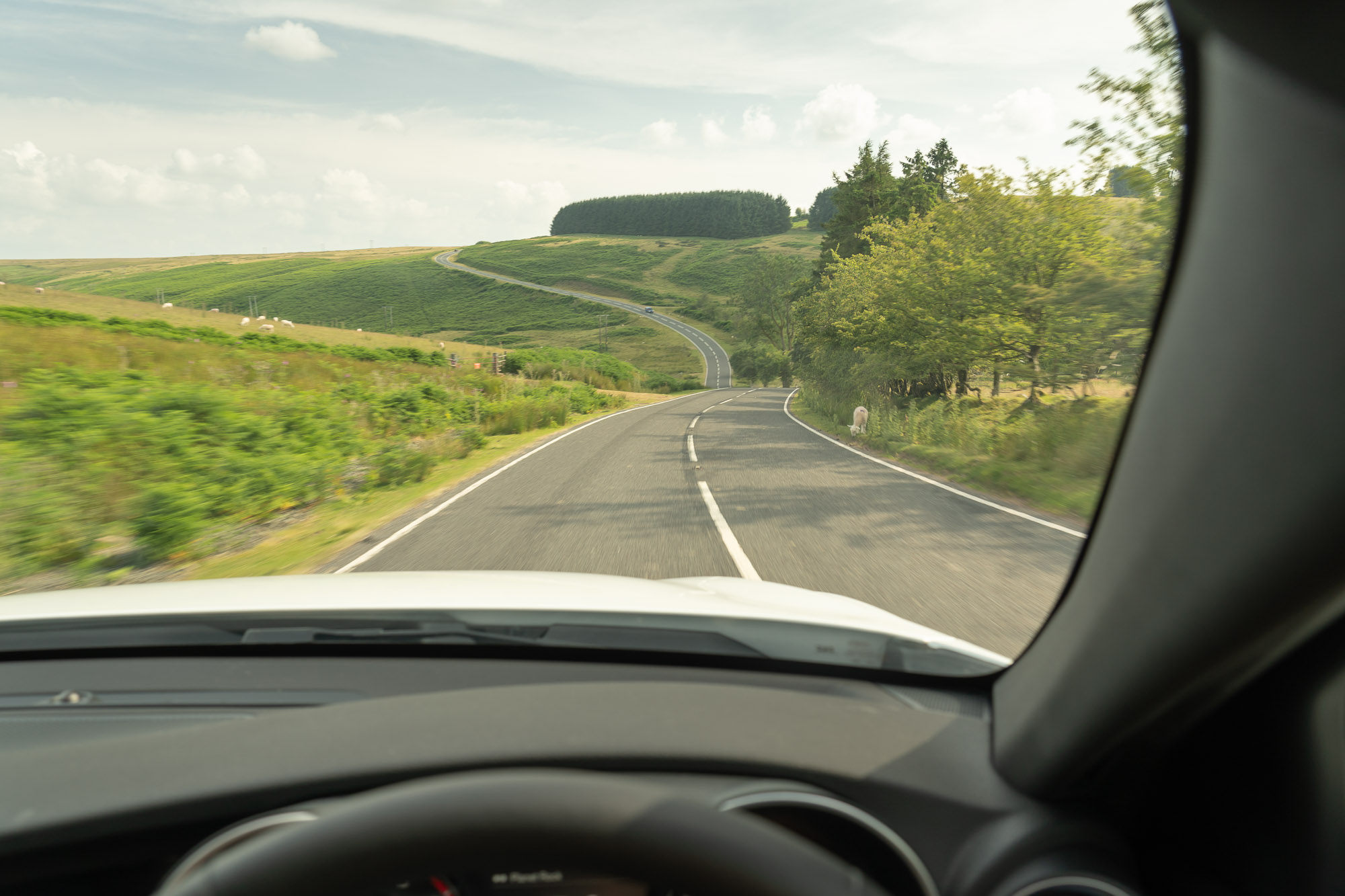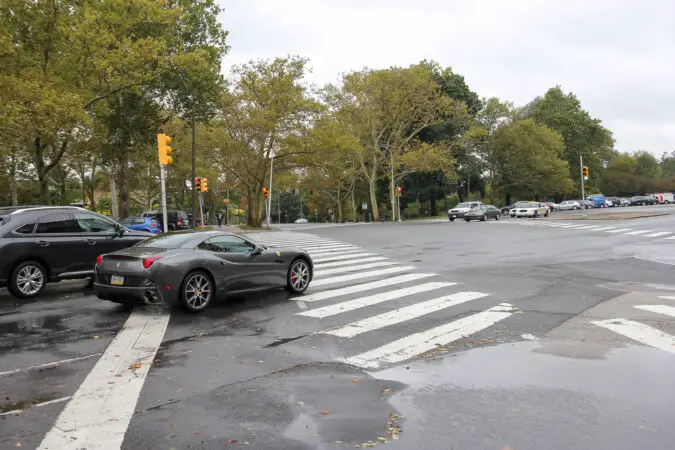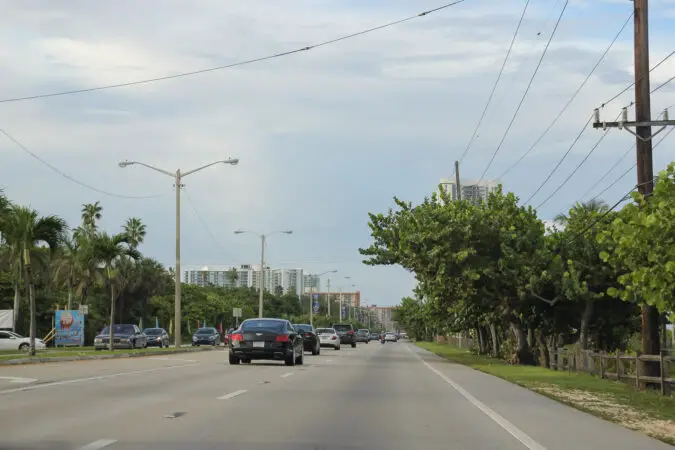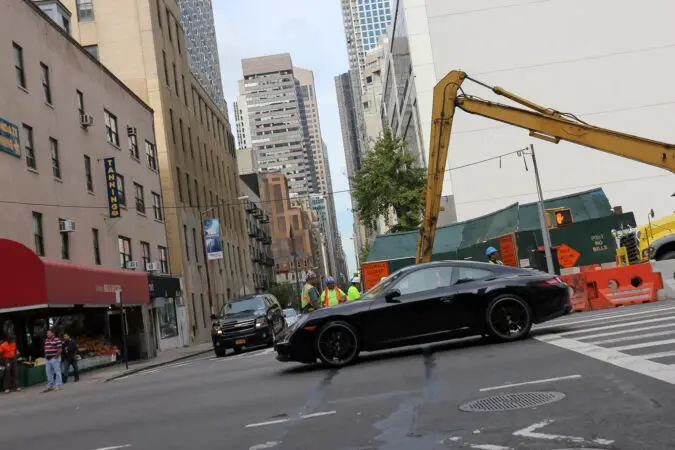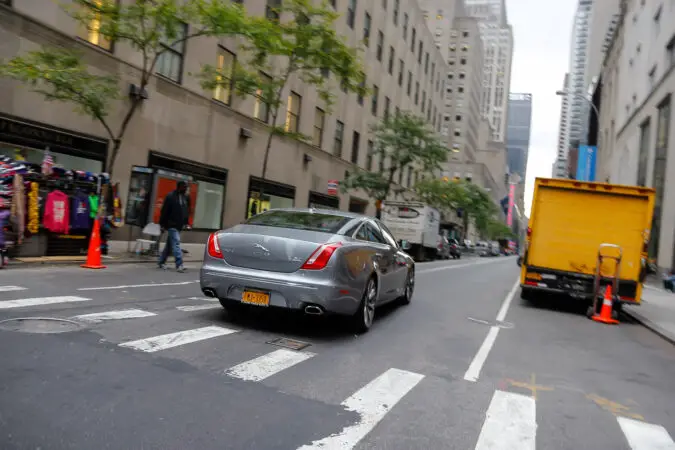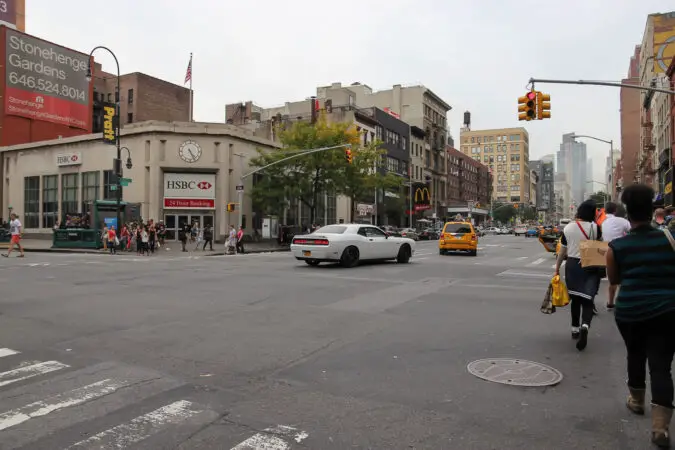Roadways are one of mankind’s greatest inventions. For thousands of years, predefined paths would make way for commerce, communication, and cultures to flow from one end of the Earth to another. In ye olden days, roads are as simple as either being dirt or cobbled. Now, road networks are so vast, that there are even specific types of roads. So then, what is the difference between highway and freeway?
It’s a vocabulary that you might’ve heard quite often while you’re in driving school… Streets, roads, avenues, boulevards, expressways, highways, freeways, interstates, and so forth. Yet, most people are never expressly elaborated on what are the differences between these types of roads. For most, there’s not really much of a reason. It’s a road, and you simply have to worry only about driving on it.
Some roads have higher or slower speed limits, while others have more or fewer lanes. With that in mind, why bother with learning the differences? Well, between being able to navigate much easier, give much clearer directions, or just for the sake of knowing, there are plenty of nuances. So, here are some hints on the difference between highway and freeway, with a few more roads thrown in…
What Is A Highway
“Highway” is a rather generic term used to define roads that have a higher speed of travel relative to regular streets and roads. Often, highways link two points, such as two cities or large towns. This then allows the transportation of people and goods between them. Concerning their design, a highway is sometimes meant to be restricted in access to certain vehicles and have toll booths along the way.
In short, the layout of highways can be summarised as:
- Primarily connects major urban centers, such as cities and towns, or larger neighborhoods.
- They can sometimes be elevated roadways and built high above the landscapes surrounding them.
- Have one lane for either direction of traffic, or could comprise of additional lanes (aka multilane).
- Access can be restricted, either by controlling them to specific vehicles or limiting them by quantity.
- They may have a divider in between each direction of travel or may remain undivided. At the very least, it’ll be divided with painted markers.
- It may or may not have any medians, boulders, or barriers. Although, it may include left turn lanes.
Entering a highway is done using an on-ramp (off-ramp for exits) or intersection and can lead you to populated areas, such as cities and towns. Unlike freeways, highways are designed to accommodate higher traffic and have a lower speed limit. Congestion is more of a concern, with several intersection points, entries and exits, stop signs, railroad crossings, pedestrian crossings, as well as traffic lights.
What Is A Freeway
Meanwhile, “freeway” is not as loosely defined as it can be attributed to roads that have a far higher speed of travel than highways and regular roads. Similar to highways, freeways interconnect a large city, town, or region with one another. Compared to highways, freeways are built to accommodate a high rate of traffic flow and at higher speeds. Access can be limited, though freeways are toll-free.
To summarise, the configuration of freeways can be seen as:
- Consists of a minimum of 2 parallel roadways for each direction, with at least 4 sections/lanes in total. Emergency lanes are also present in both directions.
- No crossing points for approaching vehicles, allowing you to travel more safely at higher speeds.
- Accessibility to freeways is limited to a select few on-ramps (and off-ramps for exits), left separated from most roads.
- Substantial dividers are used between each direction of travel. These central medians could be as simple as a strip of grass, a collection of stones, a gravel path, or a heavy concrete barrier.
- No road signs, traffic lights, rail crossings, pedestrian routes, or intersections. Thus, traffic flow can remain constant and uninterrupted.
- Traffic throughout a freeway can be carried with overpasses, underpasses, and interchanges.
Freeways are more open, have greater visibility, and feature fast-moving traffic. When compared to highways, freeways typically have far more lanes, usually at least 2 in each direction. Most folks use freeways for long-distance travel. Given that they’re made for high speeds, freeways have prominent barriers separating each direction. And, you needn’t have to worry about traffic stops or otherwise.
What Is An Interstate
As the name suggests, interstates connect states together through a collection of highways. To best explain this, we can say that all interstates are made up of highways and freeways. However, not all highways and freeways are a part of the Interstate Highway System. Interstates feature high speeds of travel in both directions, and while some interstate sections contain toll booths, others do not.
Yet, interstates are accessible only with on-ramps and off-ramps. Furthermore, and owing to a faster pace of travel, interstates don’t have traffic lights. Or, stop signs, intersections, crossings, and so forth that could hinder the flow of traffic. The general layout of interstates is more akin to freeways than highways. Interstates tend to have restricted access, hence permitting you to travel much faster.
What Is An Expressway
Then, we have expressways, which are wide roads that are configured to have a minimal interruption in the flow of traffic. Accessing a freeway is typically done with on-ramps and off-ramps, though it’ll sometimes contain intersections. With that being said, expressways also have restricted access, and this results in a lower rate of crisscrossing traffic. At least, when compared to highways and roads.
Just like freeways, expressways are made for higher speeds of travel. The sections are divided into a series of wide lanes, including specialty commercial lanes. Some expressways have up to 8 lanes for each direction. Concrete dividers are used, though not all vehicles can drive on them. For example, slow-moving cars and motorbikes aren’t allowed. In addition, you might encounter toll booths on one.
Difference Between Freeway And Highway
Now, we can get to discussing the difference between highway and freeway. To make things a bit easier and alleviate the confusion, this table should clear things up:
| Aspects | Highway | Freeway |
|---|---|---|
| Definition | A wider section of road with a relatively higher rate of traffic flow and faster speeds | A divided highway with no tolls and higher speeds of travel with minimal traffic interruptions |
| Lanes | 2 to 8 lanes (at least 1 in each direction) | At least 4 lanes (minimum of 2 in each direction) |
| Access | Controlled with traffic lights and stop signs | Only through on-ramps and off-ramps |
| Access To Minor Roadways | Yes, with driveway access to smaller roads and streets | No, and is inaccessible through smaller roadways |
| Toll Booths | Yes | No |
| Intersections Or Crossings | Yes, with intersections or at-grade crossings, railroad crossings, and pedestrian paths | No, with no intersections or at-grade crossings, railroad crossings, and pedestrian paths |
| Traffic Lights Or Road Signs | Yes, with plenty of stop signs, road signs, and traffic lights to control traffic flow | No, as there are no stop signs, road signs, or traffic lights to impede traffic |
| Lane Dividers | Some highways are single-lane roadways (in each direction), separated only by painted markers. | Physical separations with a central median, such as concrete barriers or even a strip of grass |
| Speed Limits | Lower than freeways, but higher than normal roads (55mph to 70mph) | Higher than freeways and much higher than normal roads (70mph to 80mph) |
| Traffic Flow | Highways carry traffic across overpasses, underpasses, driveways, interstates, arterial roads, or collector roads | Freeways carry traffic exclusively through overpasses and underpasses |
| Urban Areas | Highways are found in urban and rural areas alike | Freeways are generally common in urban areas like cities and busier towns |
Freeway Vs Highway
With thorough explainers of the difference between highway and freeway, here’s how they vary:
- Accessibility – Highways aren’t as restricted, allowing a wide variety of vehicles and even pedestrians on them. Meanwhile, most states in the US don’t allow pedestrians, bicycles, motorcycles, and slow-moving vehicles on freeways. Although, certain states do open up freeways if there’s no alternative.
- Entry And Exit – Freeways are also limited to how you can access them. To drive onto a freeway, you need to enter it through specified on-ramps and particular interchanges. On the other hand, highway networks across the US tend to be more open, omitting entrance ramps or specific crossings to enter.
- Medians – Due to the higher speed of travel, freeways employ hard medians and barriers to separate either direction of traffic. These could include grass patches, gravel paths, or a concrete divider. With highways, most of them don’t feature any hard dividers. Instead, opting to use painted markings.
- Maximum Speed Limit – Freeways normally carry fast-moving traffic. As such, it’s normal to see most freeways set a maximum speed limit as high as 70mph to 80mph. Meanwhile, highways can be quite a lot slower. Depending on the location, highway speed limits vary between 55mph to 70mph.
- Minimum Speed Limit – Highways can sometimes be fairly congested, which severely limits the speed of travel for most cars. On the flipside, freeways are designed to allow a higher rate of vehicles that could drive faster. Thus, you’re often not allowed to drive below 55mph to 65mph on freeways.
- Traffic Crossings – You can find a variety of stop signs, traffic lights, intersections, railroad crossings, or even pedestrian crossings on highways. With that being said, freeways are made with fast traffic flow in mind. As such, you won’t find any crossings or intersections that can slow down traffic.
Interstate Vs Highway
At a glance, the interstate network consists of various highways linked together. However, not every highway is an interstate. All interstates are considered to be controlled-access and restricted-access highways. Altogether, they help connect and provide easy road-bound commute across states. Once you’re in another state, the interstate then branches off into individual highways and roadways.
Here’s a brief look at how they differ:
- Access – Highways are often controlled-access or limited-access road networks. However, interstates are restricted-access highways that allow you to cross and travel through state boundaries.
- Connections – Interstates, as the name implies, connect all the different states together. Meanwhile, highways primarily connect bustling metropolitan or urban areas such as cities and large towns.
- Tolls – Highways often feature tollbooths in specified sections. On the other hand, interstates may at times put toll booths, but for most sections, are toll-free.
- Entry And Exit – Interstates are commonly accessed through on-ramps and off-ramps. But unlike any highways, they don’t feature stop signs, traffic lights, crossings, or intersections to slow traffic.
- Emissions – As vehicles are able to travel at a more constant speed on interstates, emissions and fuel consumption are generally lower. All the while, there’s a lot of acceleration and deceleration if you’d travel on a highway, thus elevating emissions and fuel usage.
- Noise Levels – Interstates are also quieter, as vehicles travel at a fixed rate of speed, and aren’t forced to constantly accelerate or decelerate. In contrast, highways typically have more vehicles on them, as well as feature a lot of stop-and-go traffic. Thus, causing more noise pollution.
Expressway Vs Highway
In some regards, expressways are a compromise in the difference between highway and freeway. It’ll feature limited entry and exit points, as well as a high speed of travel, just like freeways. Still, it could be similar to highways in some aspects, such as the inclusion of intersections and toll booths. you can also find special commercial lanes on expressways, as well as limitations on slow-moving vehicles.
Here are some of the ways that they differ:
- Lanes – Highways and expressways can be as small as 2 lanes wide, 1 for each direction of travel. Yet, expressways, once expanded, can be much larger. They could, at times, be as wide as 8 whole lanes.
- Entry And Exit – Accessing an expressway is limited to on-ramps and off-ramps, and specific points for crossing. Then, we have highways, which could be accessed through common intersections.
- Speed Limits – Traffic on expressways is slightly faster, though not as fast as on freeways. Often, speed is maxed out at 65mph to 75mph. Whereas, highway speed limits top out at 55mph to 70mph.
- Accidents – The lower amount of crisscrossing traffic means that the rate of accidents and collisions on expressways is lower. In comparison, highways have constantly moving traffic in every direction.
- Dividers – Highways can often be divided very simply between the opposing sides of traffic, with the use of painted lane markers. Nonetheless, expressways employ heavy concrete dividers.
- Traffic Types – Highways are a lot more open to what sort of vehicles can drive on them. In contrast, expressways limit the use of motorcycles, pedestrians, and other slow-moving traffic.
Street Vs Road
Just so we could expand our scope beyond the difference between highway and freeway, how about we look at the difference between street and road? By definition, they can be expressed as:
- Street – A public road in a city or town, often with homes or other buildings around it. Streets usually run perpendicular to avenues (more on that later).
- Road – A generic term to describe any paved path connecting two points. Roads can lead away from a city or urban area, such as heading out into the countryside.
In most cases, you could substitute ‘street’ with ‘road’, but not always the other way around. In other words, not all roads can be streets, but every street can be a road. For example, you can use a street in the context of a local neighborhood lane or a common road in a small town. Hence, roads are then used for larger pathways, such as the road leading to the airport, or going down a mountain road.
Avenue Vs Boulevard
Speaking of, what are the differences between avenue and boulevard? Owing to the similarities with their definitions, folks often get them confused. The textbook meanings of each one are:
- Avenue – A road that runs perpendicular or branches off into the streets. Avenues often have trees and other greenery or buildings on either side of them.
- Boulevard – Similar to an avenue, but much bigger. This includes the presence of trees, greenery, as well as vegetation on either side. Boulevards also typically have a median or divider to split up traffic.
Seeing how uncanny it can be, it’s understandable that folks could easily mix up between what is an avenue and a boulevard. To comprehend it more easily, boulevards are larger than most avenues. In addition, they’re often flanked by trees, plants, and other vegetation instead of purely buildings. A boulevard also tends to carry much more traffic, either way, hence the inclusion of a hard divider.
Final Thoughts On The Difference Between Highway And Freeway
Well then, you should now be fairly acquainted with the difference between highway and freeway. In short, highways are slower than freeways and are commonly more congested with loads of traffic. It also has toll booths, traffic lights, stop signs, and rail or pedestrian crossings, among others. You can think of highways as the busy urban arteries that allow people to commute and travel from two points.
On the other hand, freeways aren’t as accessible as a highway, with limited entry and exit points. It’s not filled with toll booths or other crisscrossing traffic such as intersections or junctions. However, a freeway can accommodate far more motorists at a time, and at higher speeds, too. With these out of the way, hopefully, you won’t be left perplexed about the difference between highway and freeway.
Frequently Asked Questions On The Difference Between Highway And Freeway
If you’re still unsure about the difference between highway and freeway, our FAQs here might have the answers…
What Is The Difference Between A Highway And A Freeway
A highway is a road with a higher speed limit. It thus features plenty of points for entry and exit onto the highway, with loads of intersections. You might come across toll booths, traffic lights, road signs, or perhaps rail and pedestrian crossings. Combined with its wider accessibility, highways are often a lot more congested. Meanwhile, freeways are more restricted in access. Yet, they don’t have plenty of intersections or crossings that would interrupt traffic flow. With that in mind, freeways allow more motorists to drive on them at a time. And, at far higher speeds than you’d get on a highway.
Why Is Driving On Expressways Different From Ordinary Streets
Driving on expressways is far detached from most regular streets. For instance, expressways permit a higher flow of traffic to pass through them, and at higher speeds. Meanwhile, streets are usually tiny and have relatively low speed limits. After all, streets are flanked by sidewalks, buildings, trees, and other parts of an urban landscape. Expressways are large, sometimes up to 8 lanes wide. Accessing a common expressway is also comparatively though, and managed only through specific on-ramps and off-ramps. Furthermore, expressways don’t welcome pedestrians, motorbikes, or slow vehicles.
What Is The Difference Between A Street And An Avenue
By definition, streets are often placed perpendicular to an avenue. Streets are relatively small side roads that branch off from an avenue, flanked by homes or buildings on either side. On the flip side, a typical avenue is a much larger main road, with trees, greenery, or other buildings on each side of it. You can think of streets as local paths that loop around your neighborhood. Then, you have a large avenue that runs across the main center of a town or city, which then splits off into streets.
What Legal Considerations Should Drivers Be Aware Of When Navigating Highways And Freeways?
When driving on highways and freeways, it’s important to know the rules: speed limits, lane use, and access points. As a motorcycle accident lawyer says: “Be cautious when merging, exiting, and navigating interchanges. Watch for signage about tolls and vehicle restrictions.”
What Is A Divided Highway
Quite simply, a divided highway is a highway that’s divided or separated by a median between each opposing side of travel. Most divided highways (also known as a ‘dual carriageway’ in other parts of the world) have at least 2 or more lanes on each side. These are then separated from the opposing direction of travel with a barrier in the middle. Often, the barriers can be seen as concrete dividers, metal guardrails, or a small strip of grass. Be wary of the divided highway sign, warning motorists that there’s to be a separation on the road ahead.
Who Invented The Highway
Highway networks became popularized in the early 20th-century, as automobiles became much more widespread. Thus, heightening the need for wider, smoother, and interconnected roadways. The first proper highway in the US was completed in 1911, known as the Long Island Motor Parkway. Then, in 1924, Italy opened the Milano-Varese autostrada, stretching 30 miles long. This was followed by the opening of the Bonn–Cologne autobahn in Germany, in 1932. One of the world’s first major highway projects was Dwight D. Eisenhower’s Federal Aid Highway Act of 1956. This essentially created what we know today as the Interstate Highway Network, connecting states with a wide network of roads.

